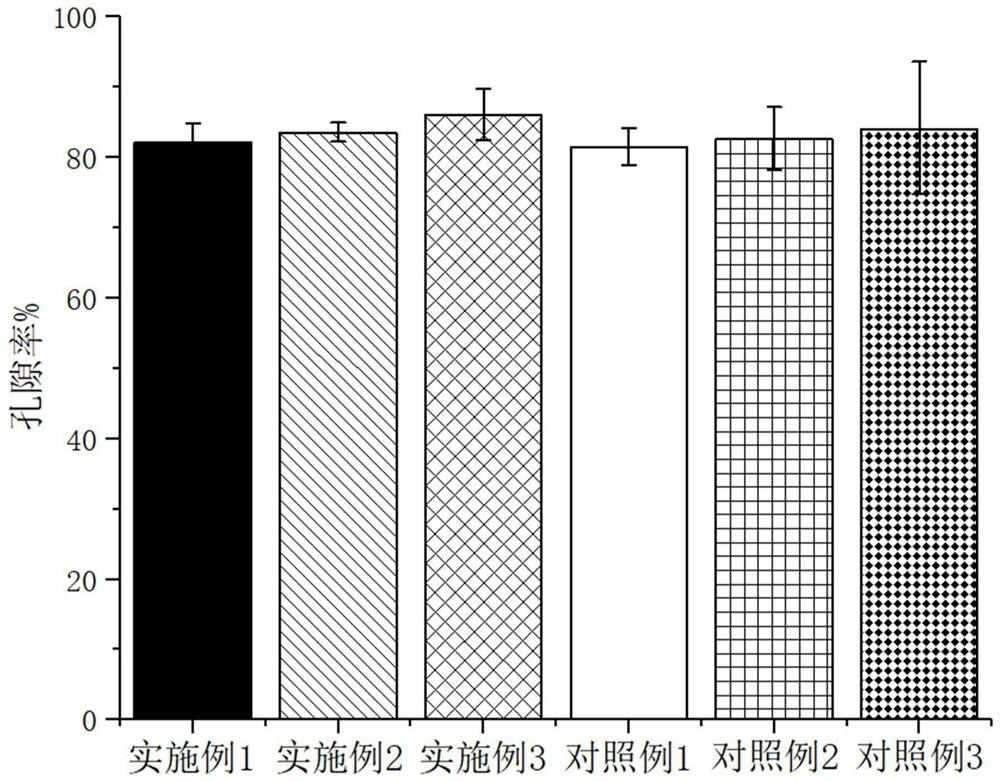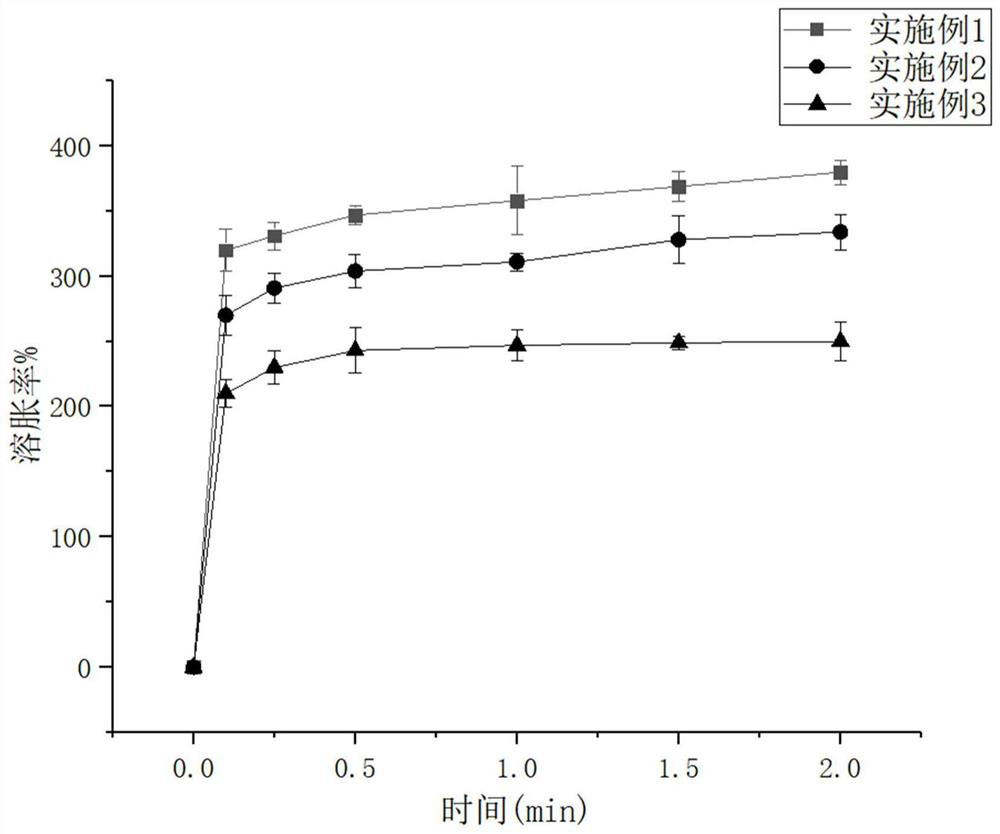Preparation method of retinoic acid dressing for promoting wound healing
A technology of wound healing and retinoic acid, applied in medical science, bandages, absorbent pads, etc., can solve the problems of no obvious promotion effect and slow wound healing
- Summary
- Abstract
- Description
- Claims
- Application Information
AI Technical Summary
Problems solved by technology
Method used
Image
Examples
Embodiment 1
[0031] (1) Dissolve polyvinyl alcohol in distilled water at 95°C to a concentration of 4% (v / v), stir until dissolved, and then cool to room temperature;
[0032] (2) Sodium alginate was dissolved in distilled water at 40° C. to a concentration of 4% (V / V), stirred to dissolve, and then cooled to room temperature.
[0033] (3) Mix polyvinyl alcohol solution and sodium alginate solution in a beaker according to 1:1, and stir until uniform.
[0034] (4) In a new beaker, add 8g of Tween 80, 0.5g of retinoic acid and 10g of propolis, avoid light, stir to dissolve.
[0035] (5) Add 100 ml of the mixed polyvinyl alcohol and sodium alginate solution to the beaker in step 4, and stir until uniform.
[0036] (6) Add hydrochloric acid to lower the pH to 2, then add 0.75% glutaraldehyde, and stir slowly for 30 minutes.
[0037] (7) The solution was introduced into a silicon mold, frozen at -80°C for 0.5h, and freeze-dried at -50°C for 24h to obtain a dressing in the form of foam.
Embodiment 2
[0039] (1) Dissolve polyvinyl alcohol in distilled water at 95°C to a concentration of 4% (v / v), stir until dissolved, and then cool to room temperature;
[0040] (2) Sodium alginate was dissolved in distilled water at 40° C. to a concentration of 4% (V / V), stirred to dissolve, and then cooled to room temperature.
[0041] (3) Mix polyvinyl alcohol solution and sodium alginate solution in a beaker according to 2:1, and stir until uniform.
[0042] (4) In a new beaker, add 8g of Tween 80, 0.5g of retinoic acid and 10g of propolis, avoid light, stir to dissolve.
[0043] (5) Add 100 ml of the mixed polyvinyl alcohol and sodium alginate solution to the beaker in step 4, and stir until uniform.
[0044] (6) Add hydrochloric acid to lower the pH to 2, then add 0.75% glutaraldehyde, and stir slowly for 30 minutes.
[0045] (7) The solution was introduced into a silicon mold, frozen at -80°C for 1 hour, and freeze-dried at -50°C for 24 hours to obtain a dressing in the form of foam...
Embodiment 3
[0047] (1) Dissolve polyvinyl alcohol in distilled water at 95°C to a concentration of 4% (v / v), stir until dissolved, and then cool to room temperature;
[0048] (2) Sodium alginate was dissolved in distilled water at 40° C. to a concentration of 4% (V / V), stirred to dissolve, and then cooled to room temperature.
[0049] (3) Mix polyvinyl alcohol solution and sodium alginate solution in a beaker according to 3:1, and stir until uniform.
[0050] (4) In a new beaker, add 8g of Tween 80, 0.5g of retinoic acid and 10g of propolis, avoid light, stir to dissolve.
[0051] (5) Add 100 ml of the mixed polyvinyl alcohol and sodium alginate solution to the beaker in step 4, and stir until uniform.
[0052] (6) Add hydrochloric acid to lower the pH to 2, then add 0.75% glutaraldehyde, and stir slowly for 30 minutes.
[0053] (7) The solution was introduced into a silicon mold, frozen at -80°C for 2 hours, and freeze-dried at -50°C for 24 hours to obtain a dressing in the form of foa...
PUM
 Login to View More
Login to View More Abstract
Description
Claims
Application Information
 Login to View More
Login to View More - R&D
- Intellectual Property
- Life Sciences
- Materials
- Tech Scout
- Unparalleled Data Quality
- Higher Quality Content
- 60% Fewer Hallucinations
Browse by: Latest US Patents, China's latest patents, Technical Efficacy Thesaurus, Application Domain, Technology Topic, Popular Technical Reports.
© 2025 PatSnap. All rights reserved.Legal|Privacy policy|Modern Slavery Act Transparency Statement|Sitemap|About US| Contact US: help@patsnap.com



